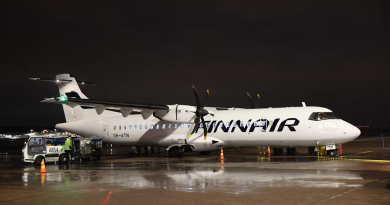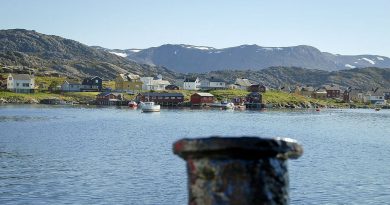A Nunavut health leader on how to use paramedics to solve a health staffing crisis

Training, planning and communication are key to success, says Dr. Francois de Wet
The Northwest Territories is contracting paramedics to address nursing shortages in communities.
It’s part of a six-part plan announced last week to address a health care staffing crisis that’s affected many parts of the country.
A similar staffing shortage last year prompted health officials in Nunavut to also experiment with posting paramedics in some of the territory’s communities.
Dr. Francois de Wet is the chief of staff at Qikiqtani General Hospital in Iqaluit and the territorial chief of staff for Nunavut’s Health Department.
He spoke with Loren McGinnis, host of The Trailbreaker, on Wednesday.
This conversation has been edited for length and clarity.
When and how did Nunavut decide to make this decision and contract paramedics to help fill staffing gaps in your healthcare centres?
This initiative started last year, in the summer of 2021. We were facing a … bit of a cataclysm in terms of our staffing for some of the health centres, and we started looking for alternate solutions to the staffing because we had difficulty finding … nurses and licensed nurse practitioners to fill the positions. The [assistant deputy minister] of operations, Jennifer Berry, came up with the idea to trial paramedics in health centres.
The first deployment was in July last year, but it basically was a question of necessity in order to maintain levels of service in our communities and that’s why we started.
How has this been going in Nunavut?
Last year’s run gave us a good chance to fine-tune the system. We ended up not having any [additional] health centres shut down last year because of the different initiatives that we brought forward. But … paramedics are typically there to scoop and go, so they go to a site, pick up the patient and bring them to a healthcare centre. And of course when they’re in the healthcare centre as a primary contact they have to do a very thorough assessment, they have to kind of decide what the next step is.
What we did was we contracted with a company called AMS, or Advanced Medical Solutions, and together with them we developed a training program to sharpen the skills of the paramedics we’re gonna deploy in terms of their assessment, and we also put in place a medical directive that gave paramedics the ability to do some of the things that was not completely in their scope.
What’s an example of that?
Well, for example, in certain cases, giving medications — not prescribing medication, but giving medications on a doctor’s order, because they have a certain amount of medication that they can give. But there’s also medication that’s dispensed in health centres on a regular basis that … it may not be in their scope to dispense. And some of these things are things that you’d give your grandmother, like Advil or Tylenol or things like that.
What are the challenges or the learnings that have come up in doing this?
The big learning was that we had to make sure that when the paramedics were reporting back to either the virtual nurse practitioner or to the physician, they gave the information that is needed to make a decision. Because the one thing that you have to understand: we didn’t plunk them down into the communities and say, ‘OK, they are going to provide all the care.’ There were different levels of care that were still available virtually. We had virtual [licensed practical nurses], we had virtual community health nurses and also physicians. So one of the big things was to make sure that what is needed would be communicated to a physician or nurse practitioner in order to make a decision, in terms of the plan of care, and we work very closely with the AMS administration people to basically tell them what we need.
I work in an emergency room myself and I’ve done a couple of shifts in the last few weeks, and the consultations I’m getting from paramedics are completely appropriate. A lot of times, there’s already kind of an idea of what needs to be done, so that’s been very successful.
In the beginning, there were some complaints that not all the information was being conveyed, but that’s being sorted out and it’s going very well.
When you talk about supporting and and training paramedics to expand their skills or sharpen their skills … what does that look like? How have you delivered that training?
The training is being delivered by AMS, but it was done in conjunction with us to kind of go through: what does a provider need to be able to work in a healthcare centre? So that program was developed in conjunction with AMS and they are doing all the training for their paramedics before they come out. The training is not actually done by the Department of Health.
Do you know the specifics of it? How long the training takes, or those kinds of details?
Part of it is to look at the assessment of the patient. How do you do a head-to-toe assessment? What do you have to look for? What do you have to do? Paramedics are very skilled providers in their own right. For example, they could do intubations at the direction of a physician if needed, which regular nurses cannot do.
We have made very clear that those kinds of high-level interventions should only be done at the direction of a physician or once … the transport team arrives, but the the actual training is more focused on the assessment of patients, the signs and symptoms that people have to look for and then also the process of how we do transfers in Nunavut, how to contact the physician who is on call for the community, how to contact the virtual nurse practitioner or the virtual community health nurse. Part of it is skills, but it’s also process.
Let’s go out on any advice that you would share with the Northwest Territories Health Department.
The biggest advice I can give is to know what you are putting them in the health centre for. Are they going to be in there to take the place of community health nurses or are they going to be in there to add skills to the health centre itself?
To me, it sounds like you guys are in the same position as we were in terms of that we didn’t have enough staffing for the health centres. And we were in a very difficult spot because we had to decide — do we shut down a health centre with with no care? Or do we bring in providers that can provide care and expand the level of care that we provide Nunavummiut? And I think from that perspective it’s been an extremely successful initiative.
But my biggest advice would be to know what you want to put them in for. If they are to replace a community health nurse, you need to make sure that they understand what their scope is, and you have to layer supports on top of that, because if you expect the paramedics to function by themselves, it’s going to fail.
-With files from Loren McGinnis
Related stories from around the North:
Canada: Paramedics arrive in Nunavik to help with regional health worker shortage, CBC News
Greenland: Greenland to reduce services amidst staffing shortages in health care system, Eye on the Arctic



